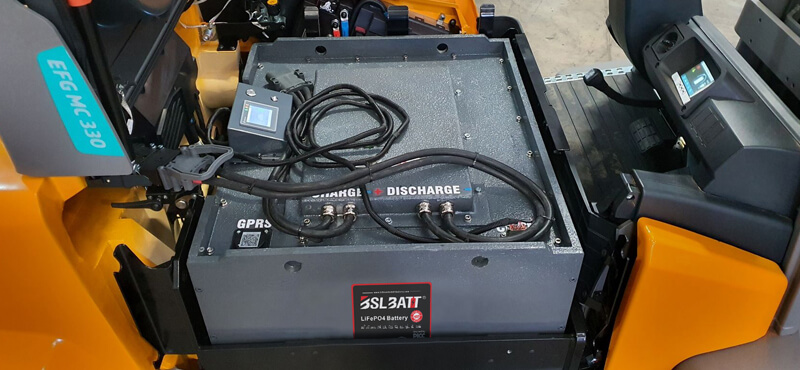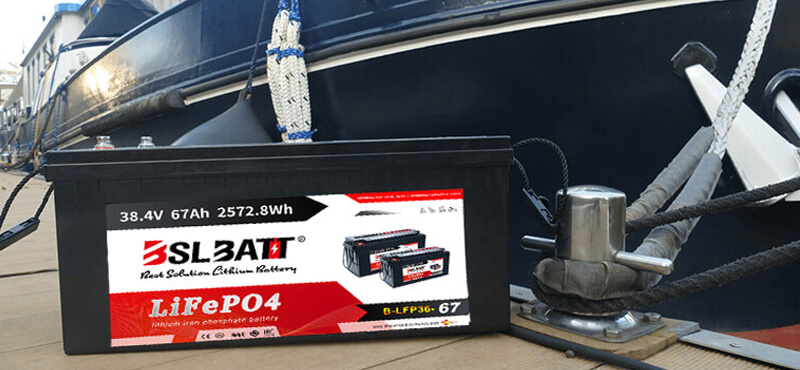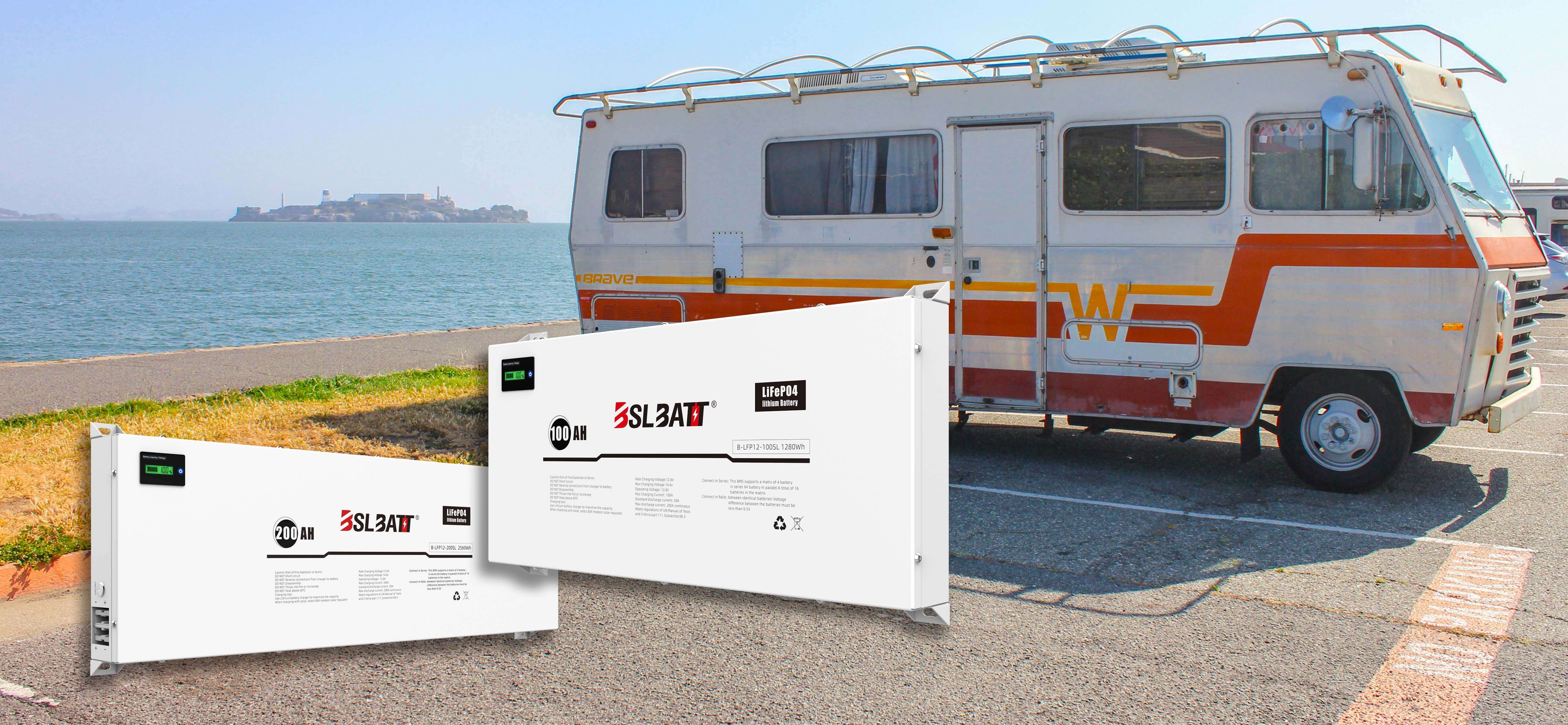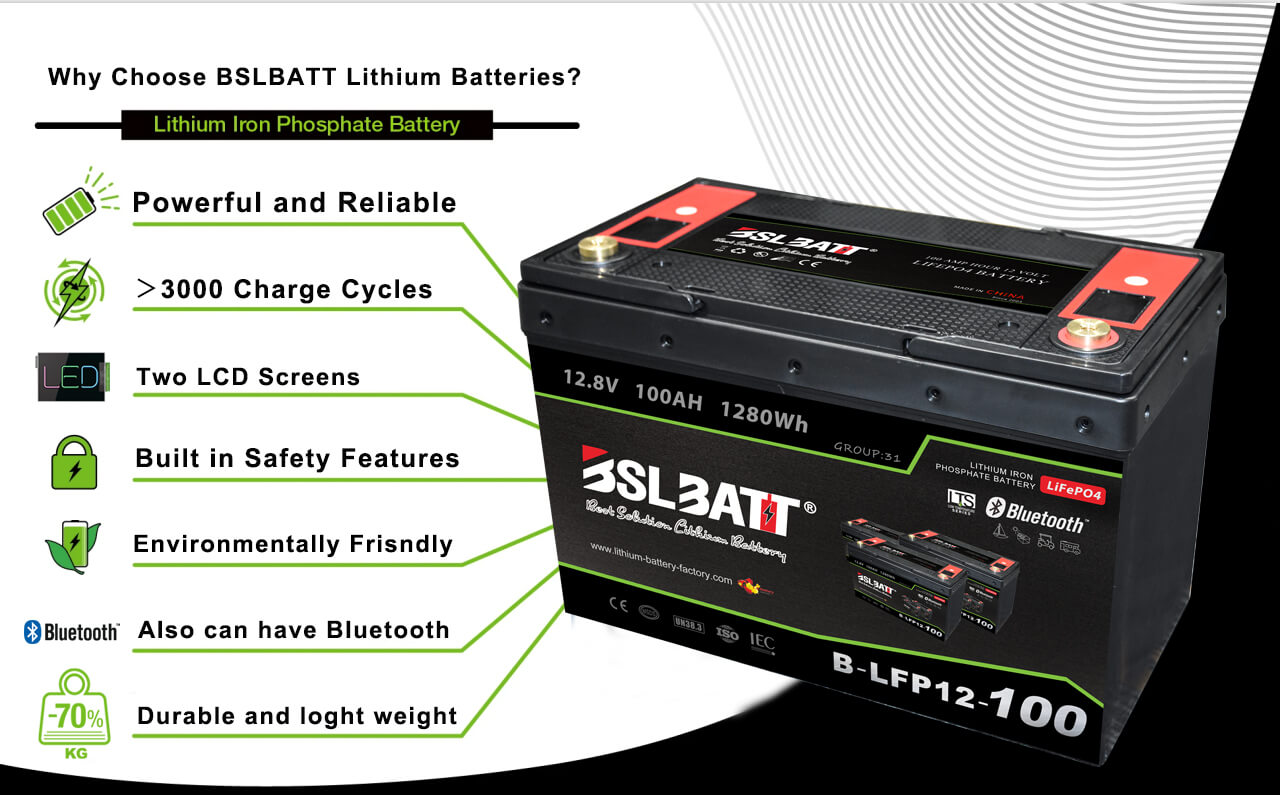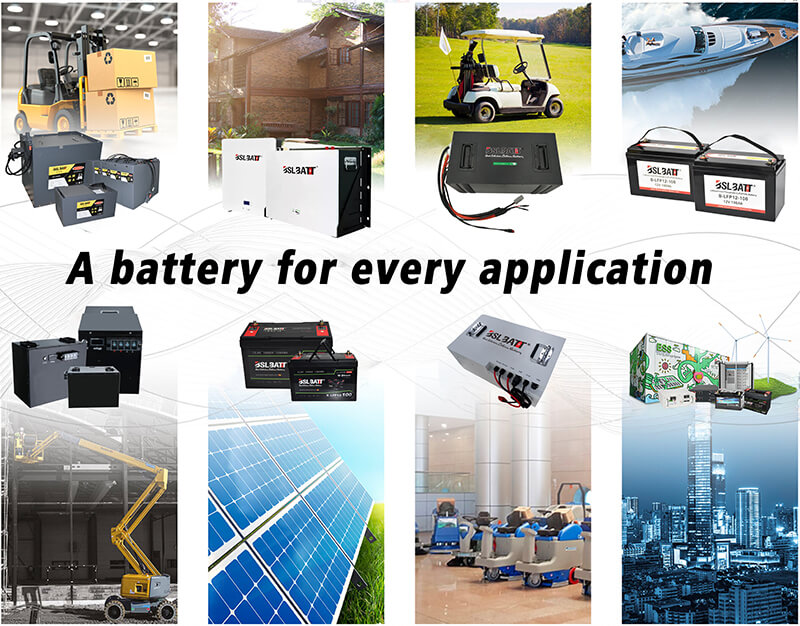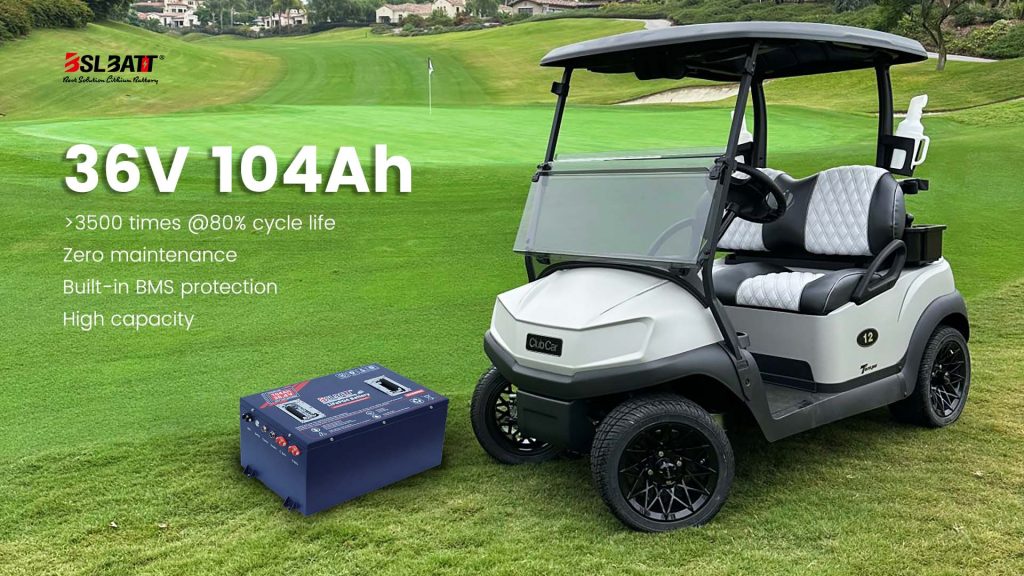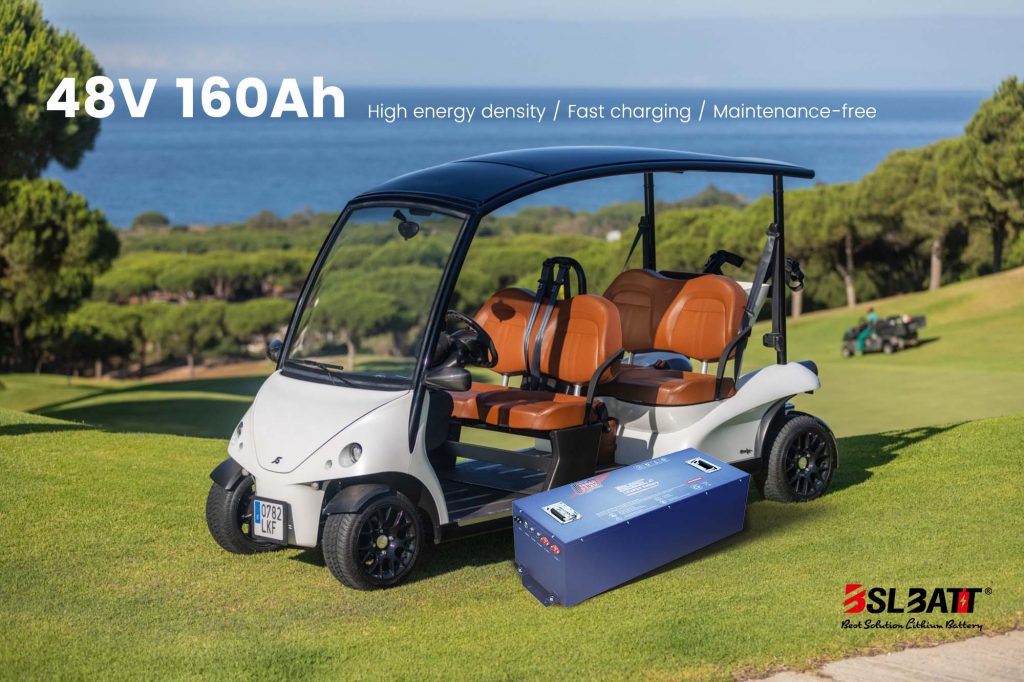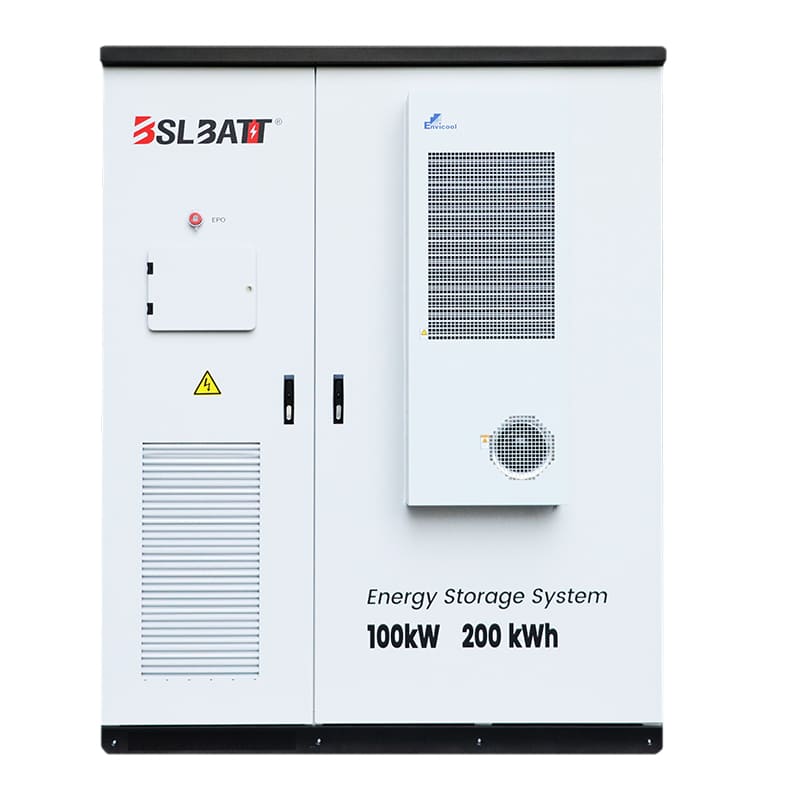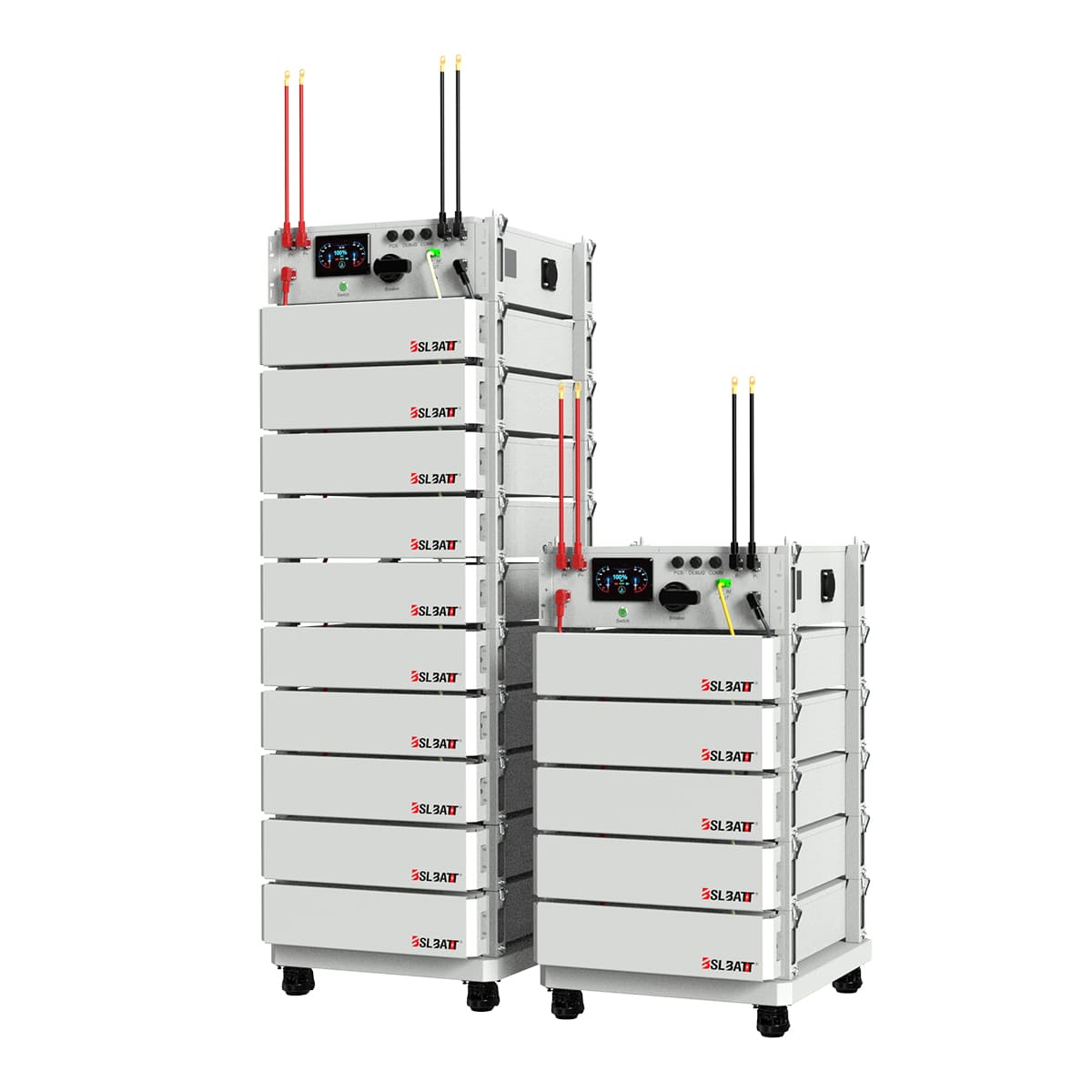Industry Application
Product Type
Understanding Your Lithium Ion Batteries: Terms To Know
| Understanding the basics of Lithium Ion Batteries ratings and terminology is important when comparing and selecting the right type and number of batteries for your application to ensure you have enough energy to meet your energy goals. The Lithium Ion Batteries we will focus on in this blog are classified as deep cycle, for applications where endurance is necessary. Common deep cycle applications include providing power for recreational vehicles, stored energy, electric vehicles, boats, or golf cart. In the following, we will use our B-LFP12-100 LT lithium deep cycle battery as an example. It’s one of our most popular batteries that work in many deep cycle applications.
Chemistry: Lithium Ion Batteries are made up of multiple electrochemical cells. Several predominant chemistries exist, including lead-acid and lithium. Lead-acid batteries have been around since the late 1800s and have multiple varieties – the wet flooded variety, sealed Gel, or AGM type. Lead-acid batteries are heavy, contain less power than Lithium Ion Batteries, are short-lived, and are easily damaged by improper maintenance. Conversely, lithium iron phosphate batteries (LiFePO4) are about half the weight of lead-acid, contain more energy, have a longer life, and require no maintenance. Voltage: It is the electrical unit of pressure in an electric circuit. Voltage is measured by a voltmeter. It is analogous to pressure or head of water flow through pipes. NOTE – Just as an increase in pressure causes more volume of water to flow through a given pipe, so the increase of voltage (by putting more cells in the circuit) will cause more amperes of current to flow in the same circuit. Decreasing size of pipes increases resistance and decreases the flow of water. The introduction of resistance in an electrical circuit decreases current flow with a given voltage or pressure. Charge rate or C-rate : The definition of the charge rate or C-rate of a Lithium Ion Batteries or cell is the charge or discharge current in Amperes as a proportion of the rated capacity in Ah. For example, in the case of a 500 mAh battery, a C/2 rate is 250 mA and a 2C rate would be1 A. Constant-Current Charge: This refers to a charging process where the level of current is maintained at a constant level regardless of the voltage of the battery or cell. Constant-Voltage Charge: – This definition refers to a charging process in which the voltage applied to a battery is held at a constant value over the charge cycle regardless of the current drawn. Cycle Life: The capacity of a rechargeable cell or battery changes over its life. The definition of the battery life or cycle life of a battery is number of cycles that a cell or battery can be charged and discharged under specific conditions, before the available capacity falls to a specific performance criteria – normally 80% of the rated capacity. NiMH batteries typically have a cycle life of 500 cycles, NiCd batteries can have a cycle life of over 1,000 cycles and for NiMH cells it is less at around 500 cycles. Lithium Ion Batteries currently have cycle life times of around 2000 cycles, although with development this is improving. The cycle life of a cell or battery is greatly influenced by the type depth of the cycle and the method of recharging. Improper charge cycle cut-off, particularly if the cell is over-charged or reverse charged significantly reduces the cycle life. Cut-off voltage: As a battery or cell is discharged it has a voltage curve that it follows – the voltage generally falling over the discharge cycle. The definition for a cell or battery of the cut-off voltage cell or battery is the voltage at which the discharge is terminated by any battery management system. This point may also be referred to as the End-of-Discharge voltage. Deep Cycle: A charge discharge cycle in which the discharge is continued until the battery is fully discharged. This is normally take to be the point at which it reaches its cut-off voltage, typically 80% of discharge. Electrode: The electrodes are the basic elements within an electrochemical cell. There are two in each cell: one positive and one negative electrode. The cell voltage is determined by the voltage difference between the positive and the negative electrode. Electrolyte: The definition of the electrolyte within a Lithium Ion Batteries is that it is the medium that provides the conduction of ions between the positive and negative electrodes of a cell. Energy Density: The volumetric energy storage density of a battery, expressed in Watt-hours per litre (Wh/l). Power Density: The volumetric power density of a battery, expressed in Watts per litre (W/l). Rated Capacity: The capacity of a battery is expressed in Ampere-hours, Ah and it is the total charge that can be obtained from a fully charged battery under specified discharge conditions elf-Discharge: It is found that batteries and cells will lose their charge over a period of time, and need re-charging. This self-discharge is normal, but various according to a number of variables including the technology used and the conditions. Self-discharge is defined as the recoverable loss of capacity of a cell or battery. The figure is normally expressed in a percentage of the rated capacity lost per month and at a given temperature. The self-discharge rate of a battery or cell is very dependent upon the temperature. Separator: This battery terminology is used to define the membrane that is required within a cell to prevent the anode and cathode shorting together. With cells being made more compact, the space between the anode and cathode becomes much smaller and as a result the two electrodes could short together causing a catastrophic and possibly explosive reaction. The separator is an ion-permeable, electronically non-conductive material or spacer that is placed between the anode and cathode. Direct Current (DC): The type of electrical current that a battery can supply. One terminal is always positive and the other always negative Specific Energy: The gravimetric energy storage density of a battery, expressed in Watt-hours per kilogram (Wh/kg). Specific Power: The specific power for a battery is the gravimetric power density expressed in Watts per kilogram (W/kg). Trickle charge: This terms refers to a form of low level charging where a cell is either continuously or intermittently connected to a constant-current supply that maintains the cell in fully charged condition. Current levels may be around 0.1C or less dependent upon the cell technology. Alternating Current: Electric current, which unlike direct current, rapidly reverses its direction or “alternates” in polarity so that it doesn’t charge a battery. Ampere: The unit that measures the rate of flow of electric current. Ampere Hour: It is the amount of energy charge in a battery that will allow one ampere of current to flow for one hour. Capacity: The number of ampere-hours that a battery can supply at a given rate of current flow after being fully charged. e.g., a battery may be capable of supplying 8 amperes of current for 10 hours before it is exhausted. Its capacity is 80-ampere hours at the 10 hours rate of current flow. It is necessary to state the rate of flow, since same battery if discharged at 20 amperes would not last for 4 hours but for a shorter period, say 3 hours. Hence, its capacity at the 3-hour rate would be 3×20=60 ampere hours. Charge: Passing direct current through a battery in the direction opposite to that of discharge, in order to restore the energy used on discharge. Charge Rate: The rate of current that is required for charging a battery from an external source. The rate is measured in amperes and varies for cells of different sizes. Thermal Runaway: A condition in which a cell or Lithium Ion Batteries on a constant potential charge can destroy itself through internal heat generation. Cycle: One discharge and charge. Over-Discharge: The carrying of discharge beyond proper cell voltage; this activity shortens battery life if carried far beyond proper cell voltage and done frequently. State of Health (SoH): Reflects battery performance that verifies capacity, current delivery, voltage and self-discharge; measured as a percentage. State of Charge (SoC): The available capacity of a battery at a given time expressed as a percentage of rated capacity. Absolute state of charge (ASoC): ability to take specified charge when the battery is new. Negative: The terminal of a source of electrical energy as a cell, battery or generator through which current returns to complete a circuit. Generally marked “Neg.” Positive: The terminal of a source of electrical energy as a cell, battery or generator from which the current flows. It is generally marked “Pos.”. Standby Service: An application in which the battery is maintained in a fully charged condition by trickle or float charging. High Rate Discharge: A very rapid discharge of the battery. Normally in multiples of C (the rating of the battery expressed in amperes). Potential Difference: An Abbreviated P.D. and found on test curves. The term is synonymous with voltage. Short Circuit: A low-resistance connection between two points in an electric circuit. Short circuit happens when the current tends to flow through the area of low resistance, bypassing the rest of the circuit. Terminal: It is the electrical connection from the battery to the external circuit. Each terminal is connected to either the positive (first strap) or negative (last strap) in the series connection of cells in a battery.
Battery Management System (BMS)BSLBATT’s batteries are all equipped with an internal BMS which protects against potentially damaging circumstances. The conditions the BMS monitors include over-voltage, under-voltage, over-current, over-temperature, short circuit, and cell imbalance. The BMS will disconnect the battery from the circuit if any of these events occur. Understanding this terminology will help you in the next step to determining the right battery for your energy needs – Find the right battery, which can be found here. If you have any questions please don’t hesitate to call, email, or reach out to us on social media. |
A Guide to Choosing the Best 48V Lithium Golf Cart Battery
Would it be worth investing in a 48V ...
10 Exciting Ways To Use Your 12V Lithium Batteries
Back in 2016 when BSLBATT first began designing what would become the first drop-in replacemen...
BSLBATT Battery Company Receives Bulk Orders from North American Customers
BSLBATT®, a China Forklift battery manufacturer specializing in the material handling indust...
Fun Find Friday: BSLBATT Battery is coming to another great LogiMAT 2022
MEET US! VETTER’S EXHIBITION YEAR 2022! LogiMAT in Stuttgart: SMART – SUSTAINABLE – SAF...
Looking for new Distributors and Dealers for BSL Lithium Batteries
BSLBATT battery is a fast-paced, high-growth (200% YoY ) hi-tech company that is leading the a...
BSLBATT to Participate at MODEX 2022 on March 28-31 in Atlanta, GA
BSLBATT is one of the largest developers, manufacturers, and integrators of lithium-ion batter...
What makes the BSLBATT the Superior Lithium Battery for your Motive Power needs?
Electric forklift and Floor Cleaning Machines owners who seek the ultimate performance will fi...








